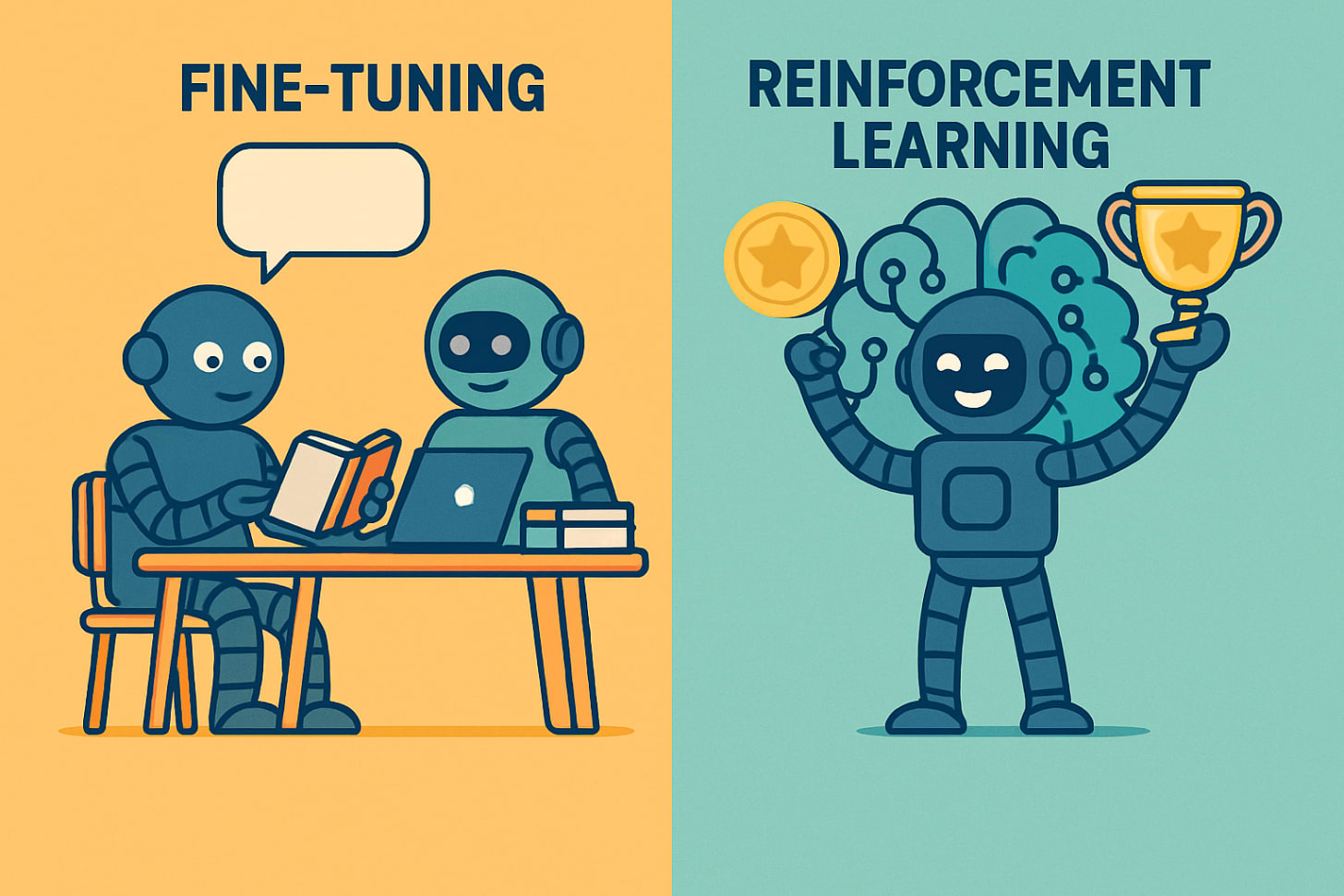The Sequence Opinion #472: Rewards Over Rules: How RL Is Rewriting the Fine‑Tuning Playbook | By The Digital Insider
A change in the nature of specializing foundation models.
Fine-tuning has long been the workhorse for adapting large AI models to specific tasks and domains. In the past, if you had a giant pre-trained model (say a language model or vision network), you’d simply collect examples of the task you care about and update the model’s weights on that data – voila, the model “fine-tunes” itself to the new task. This approach has delivered fantastic results, but it’s not without limitations. Enter reinforcement learning (RL) – particularly techniques like RLHF (Reinforcement Learning from Human Feedback) and its cousins – which are now emerging as powerful alternatives to traditional supervised fine-tuning. In this essay, we’ll explore how RL is increasingly used to steer large foundation models in ways fine-tuning alone struggles to, from aligning chatbots with human preferences to training models that self-correct their mistakes. We’ll dive into the history of fine-tuning, the rise of RL-based methods, why RL offers more control at scale, and real case studies (from GPT-4 to robotics) of this paradigm shift. Along the way, we’ll keep the tone light and accessible – imagine we’re just chatting over coffee about the evolution of teaching methods for giant AI models. So buckle up for a journey from the fine-tuning era into the reinforcement learning future of AI.
From Rigid Models to Fine-Tuning: A Brief History
Published on The Digital Insider at https://is.gd/J52YX2.

Comments
Post a Comment
Comments are moderated.